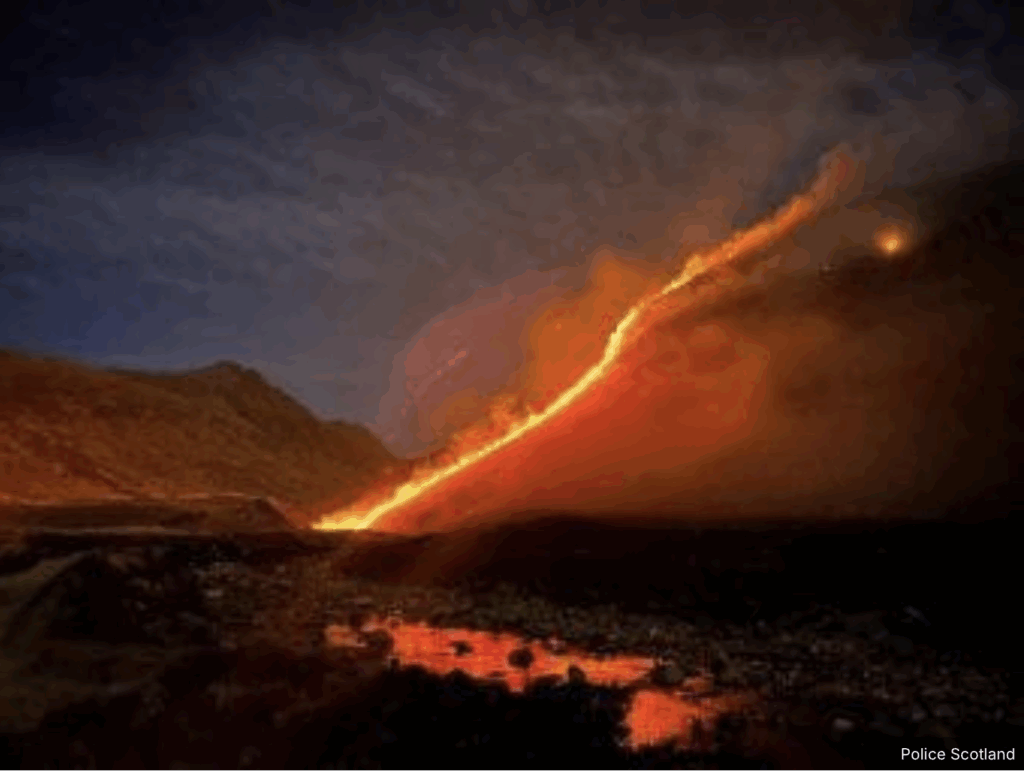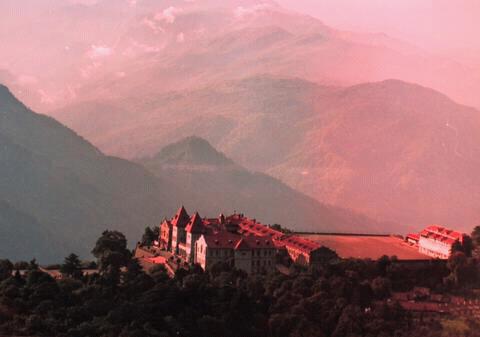Glen Rosa: Years of Conservation Destroyed by the Arran Wildfire
In early April 2025, the spectacular valley of Glen Rosa on the Isle of Arran, Scotland, was the scene of a devastating bushfire that destroyed a decade of conservation efforts, raising significant concerns about protecting natural heritage in areas prone to similar risks.
Conservationists from the National Trust for Scotland have been working to reintroduce native trees to the valley for years. The aim was to restore a landscape that, thousands of years ago, was native forest, but had been left denuded by human intervention, such as grazing by sheep and deer. The species reintroduced include downy birch, sessile oak, hazel, willow, aspen and alder, as well as threatened tree species such as Arran rowan.
The fire, which started on April 10 in a grassy area at the foot of the valley, spread extremely quickly up the valley because of the dry conditions and wind. The moorland was so dry, with a lot of dead bracken and Molinia grass, that the fire spread quickly.
Despite the efforts of local firefighters and volunteers, the situation was described as “disaster management.” The fire was not fully extinguished until the following Sunday (or ten days later, according to different source).
By the time it was over, the fire had destroyed 27,000 trees. But the devastation was also severe on wildlife, with hundreds of reptiles and amphibians dying. A subsequent investigation documented the loss of 72 slow worms, 25 adders, countless frogs and lizards. Another source gives more specific numbers: 72 slow worms, 25 adders, 14 lizards, 21 frogs and one toad dead. The valley’s ecology has been completely disrupted and will take a long time to recover. Much of the Glen Rosa valley is left as a blackened and charred moonscape.
The causes
Initial investigations have suggested that the fire may have started when the sun ignited dry soil through a discarded glass bottle, although the Scottish Fire and Rescue Service (SFRS) has yet to confirm the cause. The fire occurred during a period of “extreme risk” for bushfires across Scotland, with a warning issued by the SFRS a week before.
The SFRS station commander for Arran Kate Sampson classified the blaze as a “significant bushfire”, with an high number of calls received about bushfires during the warning period. Authorities have reiterated the importance of avoiding fires and barbecues in the countryside.
Why a bushfire in a humid environment
Normally, weather conditions lead to high levels of humidity in the area but, in this case, the fire spread very quickly due to the dry conditions and the wind. The moorland was described as “so extremely dry (tinder-dry), with much dead bracken and Molinia grass, that it acted as a highly flammable fuel. There is also talk of dry grass “like tinder”.
The fire broke out during a period when the Scottish Fire and Rescue Service (SFRS) had issued an “extreme risk” bushfire warning for the whole of Scotland, a week before the event at Glen Rosa. Ricky Donachie of the SFRS described the fire as a “significant bushfire”, noting the high number of calls for vegetation fires received during the warning period. Environmental experts warn that drier and warmer springs are making the annual bushfire season (March-June) more ferocious.
Although a wetter end of the month helped dampen other fires, this came too late to help Glen Rosa, which had already been burning for several days.
In summary, the sources we cited describe a fire that broke out and spread quickly due to conditions of considerable drought, strong winds and the presence of dry vegetation, all in a period of high risk of forest fires.
Risk to ecosystem
The Glen Rosa fire dramatically highlights how bushfires pose a risk not only to existing ecosystems, but also to restoration efforts aimed at recovering a historic natural “heritage”. In this case, the blaze has destroyed a decade of work to restore the valley to an ecological state reminiscent of its 1,000-year-old status as a native forest. Protecting these restoration projects, which recreate landscapes that are historically important for biodiversity and the environment, is crucial.
The recovery
Despite the devastation, hope is not lost. The National Trust for Scotland’s senior ranger on the Isle of Arran, said a “start from scratch” was needed. Work to replant trees has already begun. Two weeks after the fire, nearly 100 volunteers (or 90 volunteers according to another source) have helped plant 6,000 (or 6,270) new trees. A fundraising appeal to help revitalise the area has already raised £12,000.
A symbol of hope has emerged from the ashes: a young Arran rowan, one of the world’s rarest species and unique to the island, has survived the fire near the Blue Pools, a popular beauty spot.
The establishment of well-structured forests brings great benefits for wildlife and biodiversity but, according the National Trust for Scotland’s senior ranger, also act as “firebreaks”, making the land more resilient to future fires. In this way, human intervention, which in the past caused the degradation of the valley, is now aimed at having a positive impact on nature, protecting and rebuilding this precious natural heritage.
The recovery journey for Glen Rosa will be long, but the combined efforts of rangers, volunteers and donors demonstrate the commitment to restoring a devastated ecosystem and protecting a natural heritage of inestimable value.






